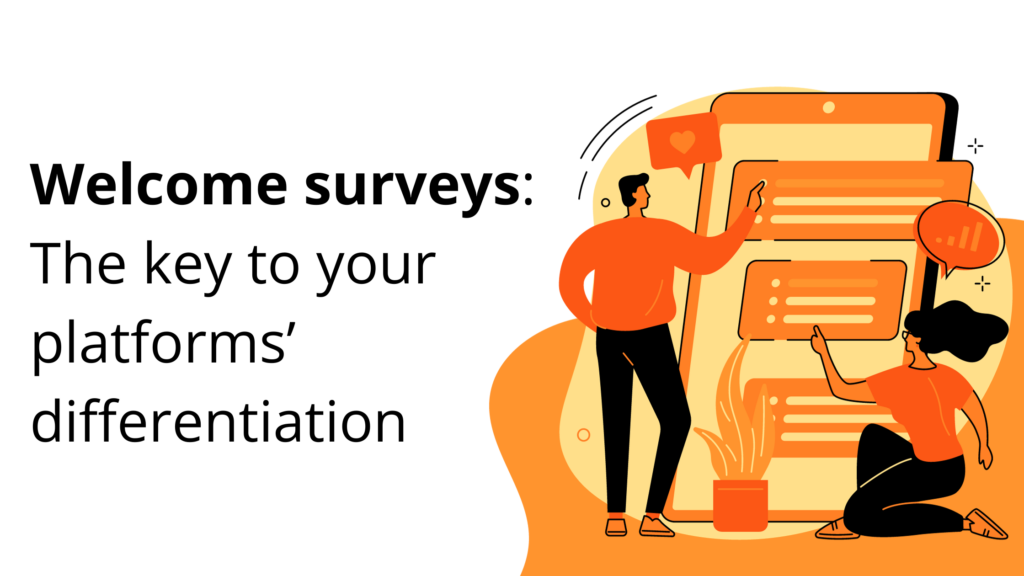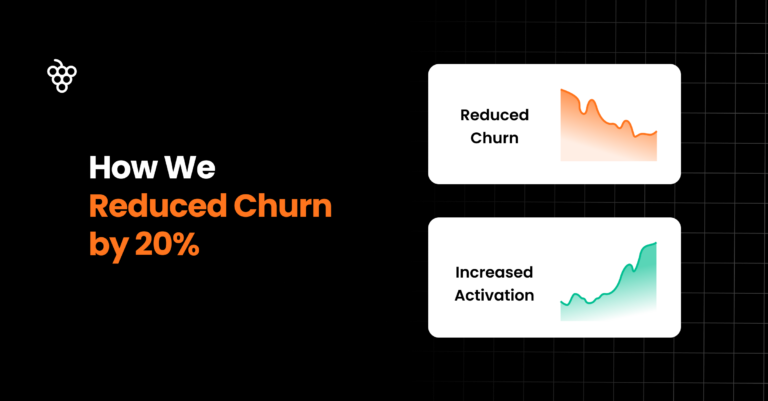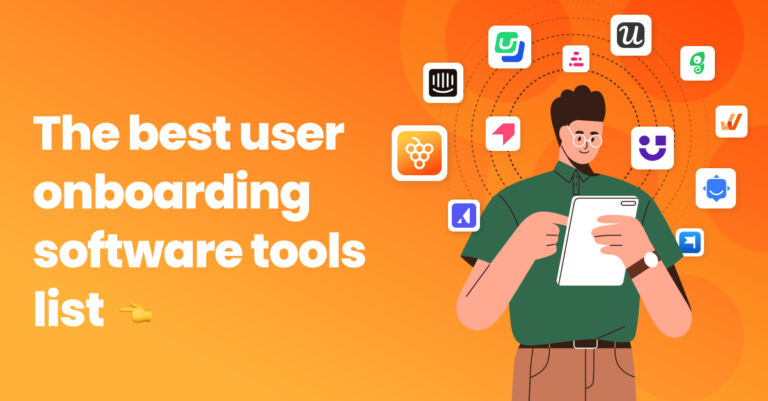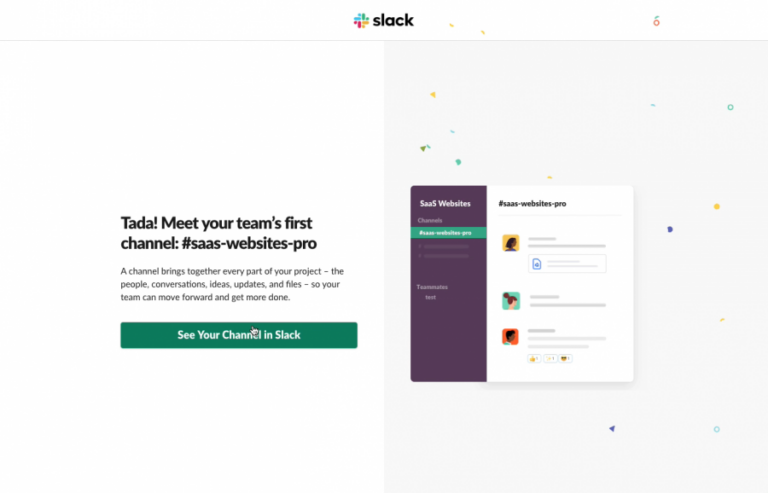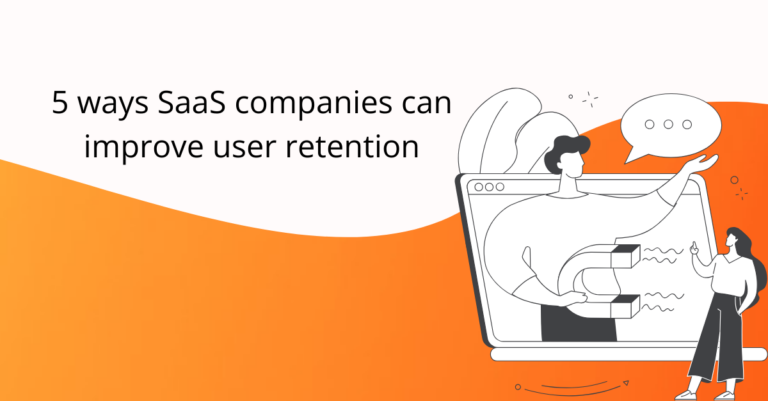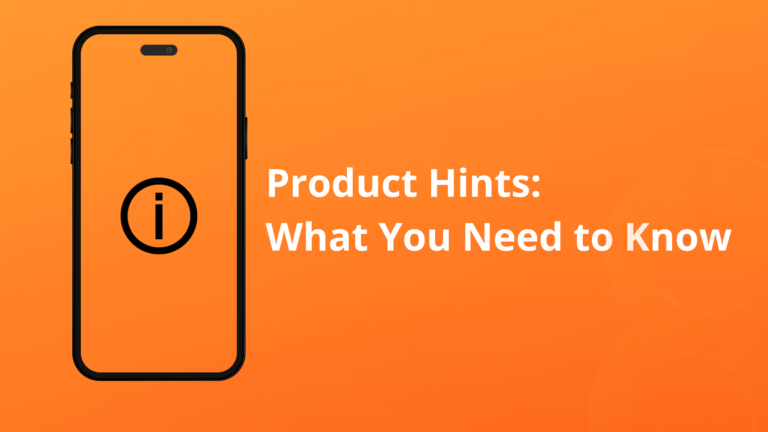Consider welcome surveys like a restaurant host.
They receive you at the door, welcome you to the restaurant, and help you find your preferred table.
In essence, they set the tone for the rest of the evening.
Understanding how to create welcome surveys sets the tone for how users will react to a platform in the first and (upcoming) interactions.
The first reaction from a welcome survey will either delight or detract the user from your platform.
Let’s dive into the wonderful world of welcome surveys, why they’re important, and of course… The best practices to make your first product impression go from “meh” to “wow”.
What is a welcome survey?
A welcome survey is usually a brief questionnaire sent to new users of a platform. This survey helps segment users and create personalized onboarding experiences.
The purpose of a welcome survey is to get an understanding of your users, usually they ask about:
- Goals
- Role in a company
- Level of experience
- Responsibilities
Here’s an example of a welcome survey from Veed, a video platform, asking questions about what the platform will be used for.
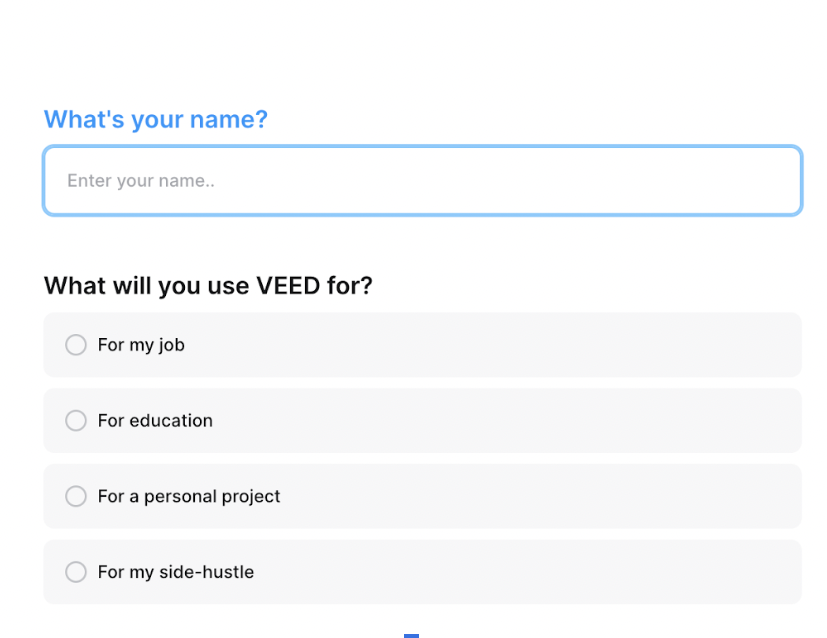
(Image Source: Veed)
This kind of personalized approach to onboarding helps strengthen customer relationships and encourages further engagement with the brand in the future.
Benefits of a welcome survey
The main benefit of welcome surveys is the level of personalization they can offer to new users.
Not only are surveys a welcoming touch, but they can customize the process to fit each user’s needs.
And when users feel welcomed to a new platform, they are 75% more likely to continue using the software.
Welcome tours improve the user experience, which:
- Reduces the time to value by 34%, which translates to higher engagement and perceived value.
- Decreases risk of user churn by up to 20%
- Boosts customer retention by 80% thanks to onboarding personalization
When welcome surveys personalize the experience, they can increase business growth by two times thanks to high customer loyalty.
7 Best Practices to “welcoming” welcome surveys (with examples)
By following best practices, you can create welcome surveys that help tailor personalized and delightful onboarding experiences for users.
1. Keep the goal in mind
Welcome surveys are the first data point from your users. So it’s crucial to ask the right questions at this stage for the right onboarding flow to be triggered.
To be as effective as possible, ask yourself what the goal of the welcome survey should be. Usually, welcome surveys go one of two ways:
- Either the platform asks questions about the actual user’s demographics
- Or, questions about the role and objectives of a user.
In the first case, the goal is to tailor the onboarding flow to the users’ demographic straights. Usually, these welcome surveys ask users questions that fall into the category of “demographics”. Things like age or gender, help tailor the onboarding flow to the “typical” needs of certain demographics.
Here’s an example of what that looks like in action with Trello. In this case, it would be asking about the name of a user:
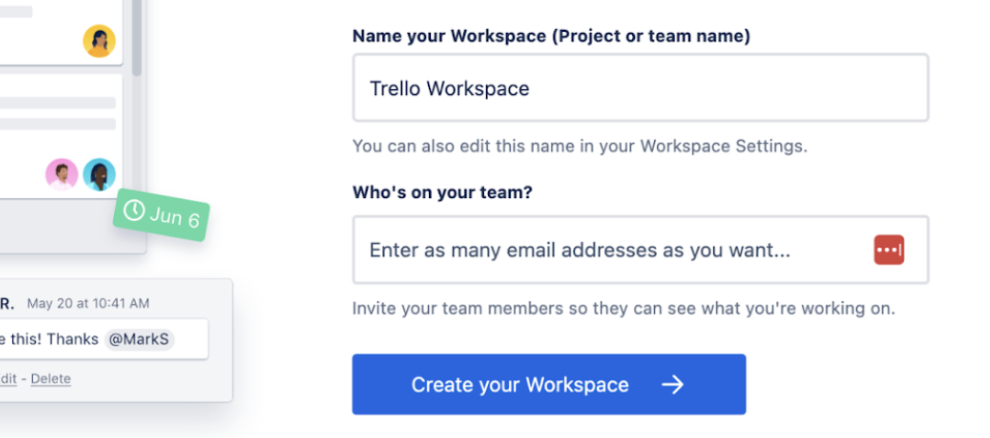
(Image source: Trello)
In the second case, the goal of questions is targeted towards the user’s goals and objectives to help inform product decisions and offerings.
Here’s an example of how Squarespace asks users about their usage goals. In this case, what they’d like to use the website for. As a result, Squarespace then goes on to offer templates that best fit the answer and goal of a user.
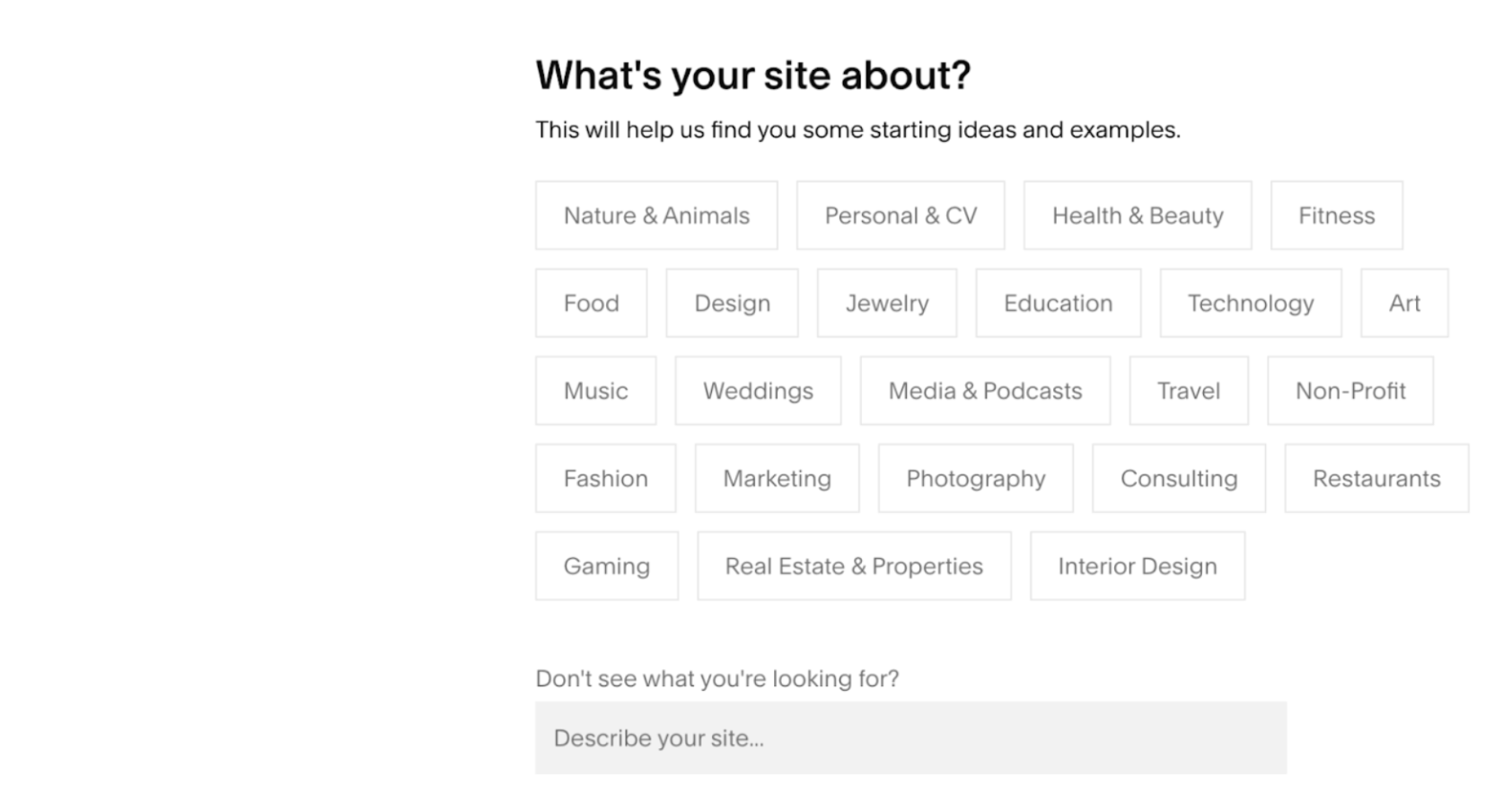
(Image source: Squarespace)
Here are the two most important questions to help you define your goals for the welcome survey:
- Are user demographics important for this product or service?
- Do we have different features and templates depending on our user’s objectives?
Once you’re able to answer these two questions, you can then tailor the welcome survey to best meet the user.
2. Segment your users
Welcome surveys unlock the breadth of personalization you can offer during the user onboarding flow. And for onboarding flows to be personal — you need to segment your users.
Segment your users based on their needs, their pain points, and objectives. An example of this could be segmenting your users based on their role.
By doing so, you closely align the onboarding journey with the best fit for users’ needs and goals — over a generic all-in-one onboarding tour.
For example, when Loom welcomes its users to its platform, it asks about their current role in the company. By doing so, they can already give you helpful pieces of information and show you ways to use the platform for the most common marketing needs.
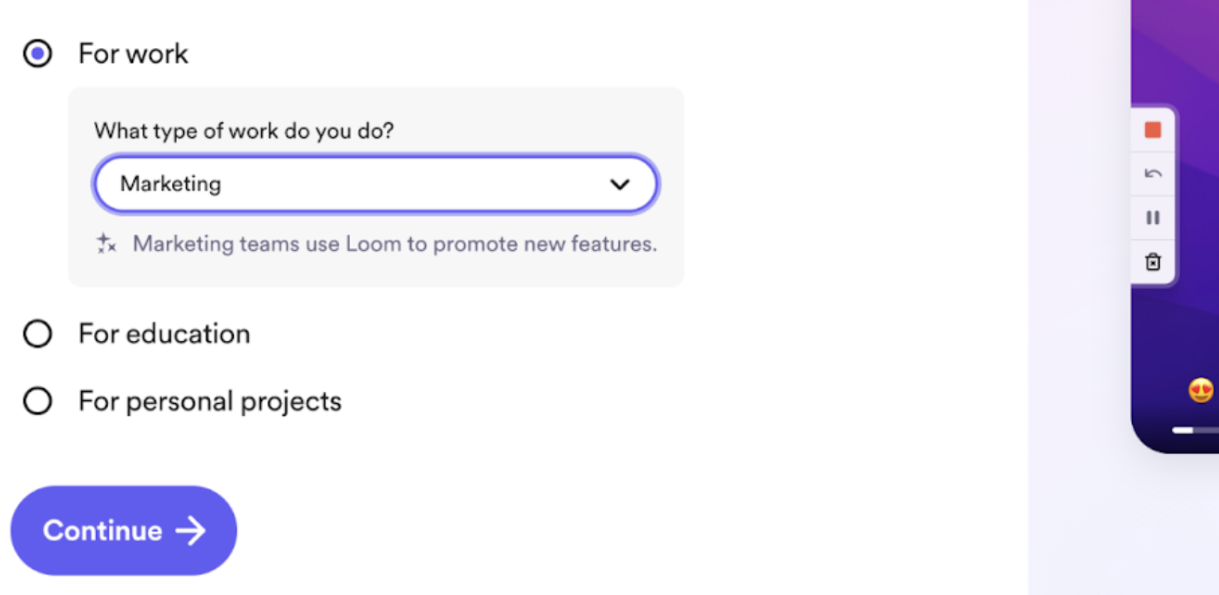
(Image source: Loom)
This requires developed user personas and different onboarding sequences.
3. Keep the question copy simple and short
Welcome survey questions need to be clear and concise to receive the most accurate feedback. Ask one question per screen and keep questions direct with your goal in mind.
Say “No” to jargon and long sentences. And say “Yes” to clear and easy-to-understand questions.
And, keep users in the loop behind the why of questions. That will give users more context as to why their answers are valuable and how the survey will benefit them.
It’s good practice to consider the sequence of the questions to ensure the respondent is not overwhelmed. And, presenting questions in a logical order, it’s easier to gather the information.
Here’s an example of some clear and concise onboarding copy by Calendly.
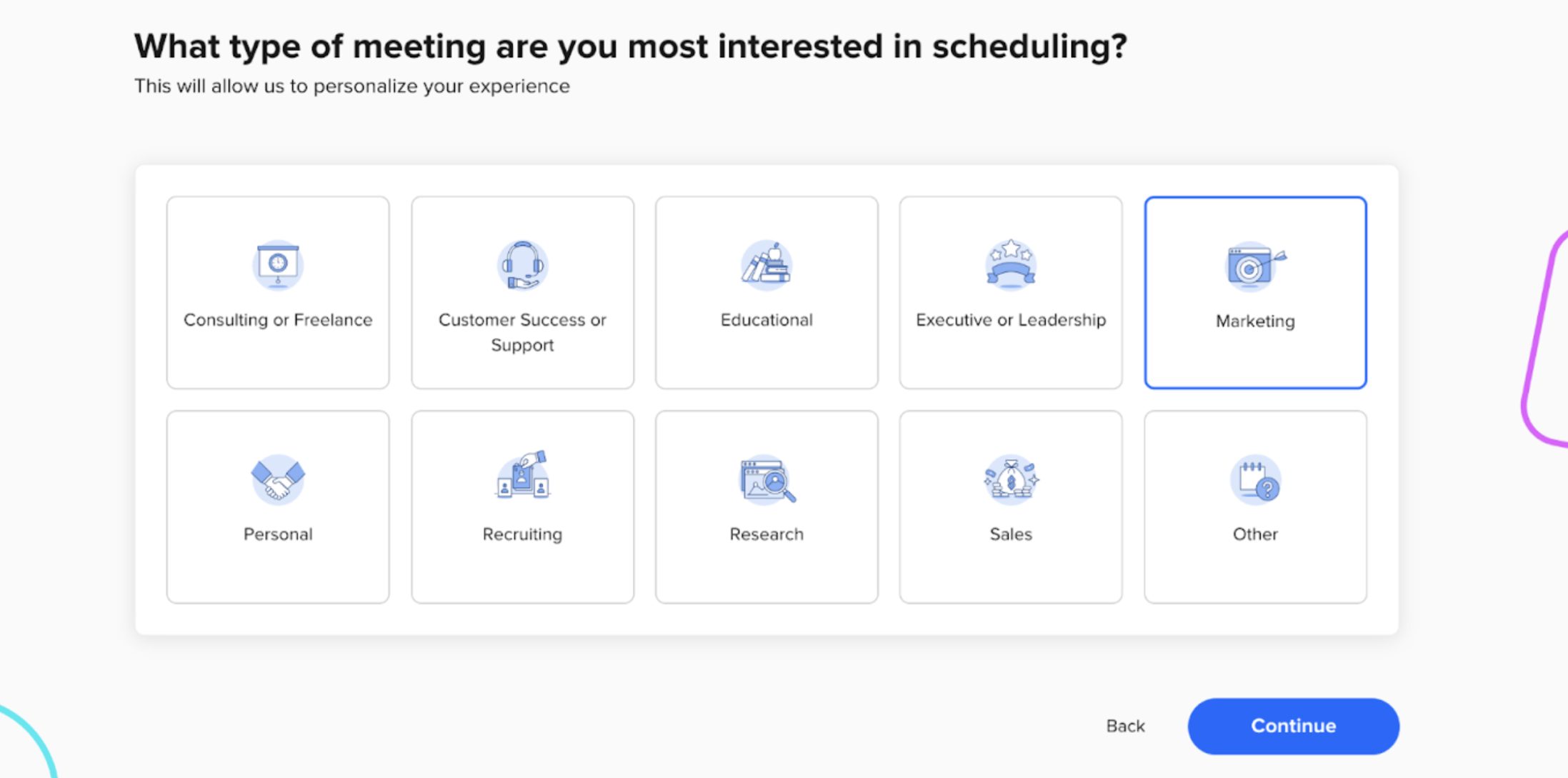
(Image source: Calendly)
4. Introduce your brand personality
Make the user experience different from the very start by introducing your brand personality in welcome surveys.
Avoid the generic ” Welcome to blah blah blah” — that copy won’t set you apart from competition.
Start with branded words and tone. You want your users to immediately feel the connection with a set brand personality.
5. BLUF the value of your product
Don’t lie to your users, but use BLUF– Bottom Line Up Front. Add the value of your product in the welcome survey. The goal is to validate their onboarding and learning time with the benefits they’ll receive from your product.
A way to include the value of your product is to add it to the survey itself. For example, ask users what their goals are and include the feature that accompanies it. Here’s what it looks like in practice.
In this case, Squarespace asks users what they want from their platform. But it does so by introducing the different features it offers: Pre-made templates or easy-to-use drag-and-drop features. Each one of the options will attract a different audience, while also showing they offer many ways to create a website.
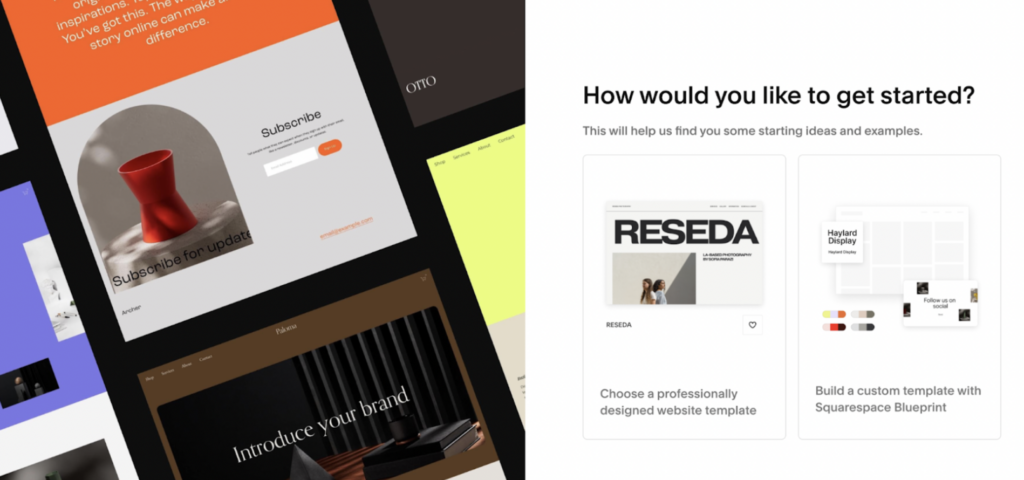
(Image source: Squarespace)
6. Mix in a little social proof
Social proof helps validate that the user is spending their time wisely. And, it motivates users to finish onboarding to receive the benefits stated.
Include images, quotes, or copy that highlights past users’ quotes, data on improvements, or social approval ratings.
7. Add a progress bar
Progress bars help motivate users to finish the welcome survey. It helps serve as a visual representation of the user’s progress through the onboarding process.
It also increases the user’s confidence that they are making progress and that the process is not too time-consuming.
Or, you could choose the option to number questions.
Here’s an example of how Elicit includes progress in their welcome survey by sharing how long it will take.
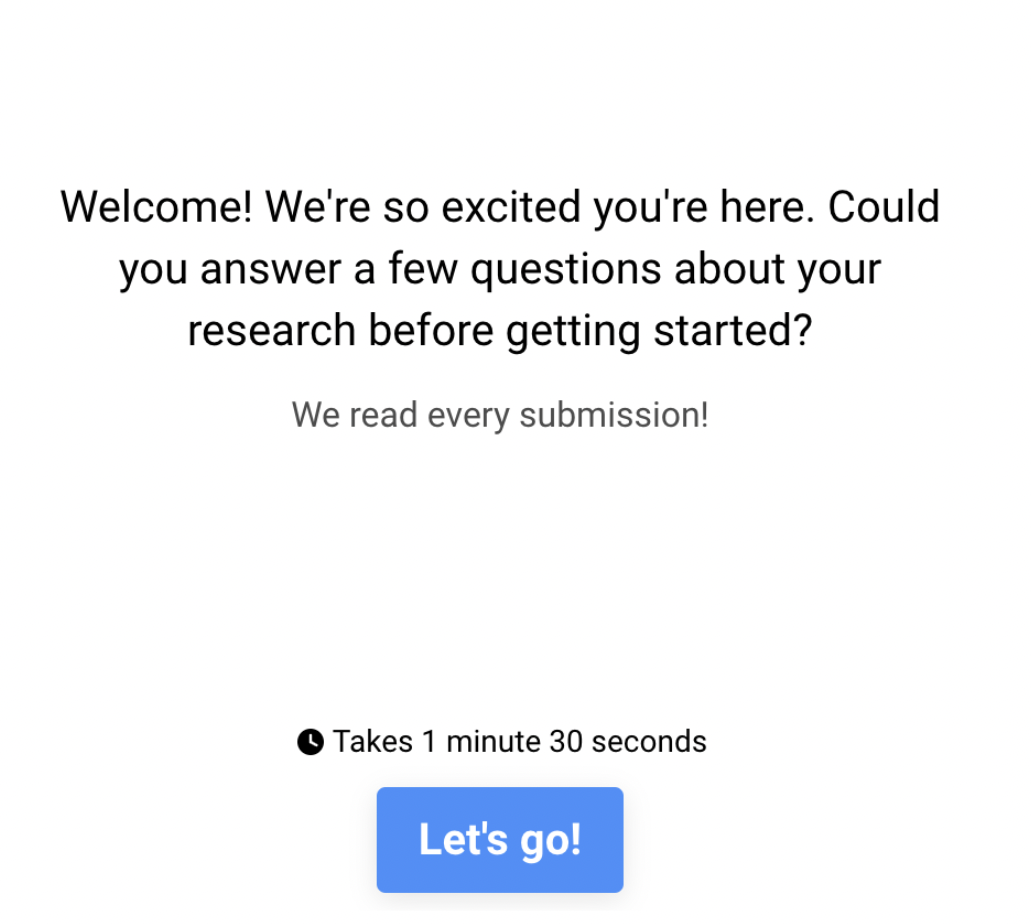
(Image source: Elicit)
How do you create a welcome survey? With Product Fruits it’s easy.
With Product Fruits, you have the option to create a survey from our broad range of templates or start from scratch.
Each survey (template or scratch) is fully customizable so that it can fit natively into your platform’s interface. And, it’s the only user onboarding tool that offers survey branching.
Yep, that means you can supercharge your onboarding personalization.
You can play around with videos, images, GIFs, and more. Your welcome survey can continuously be optimized for the best performance.
And the best part?
Because Product Fruits offers a whole array of onboarding features, you can customize welcome tours to trigger different onboarding journeys. That means product tours, demos, checklists, hints, and announcements can all be segmented for the individual user.
No coding is required — it’s as simple as drag and drop.
Create your welcome surveys today, and try Product Fruits for free.
